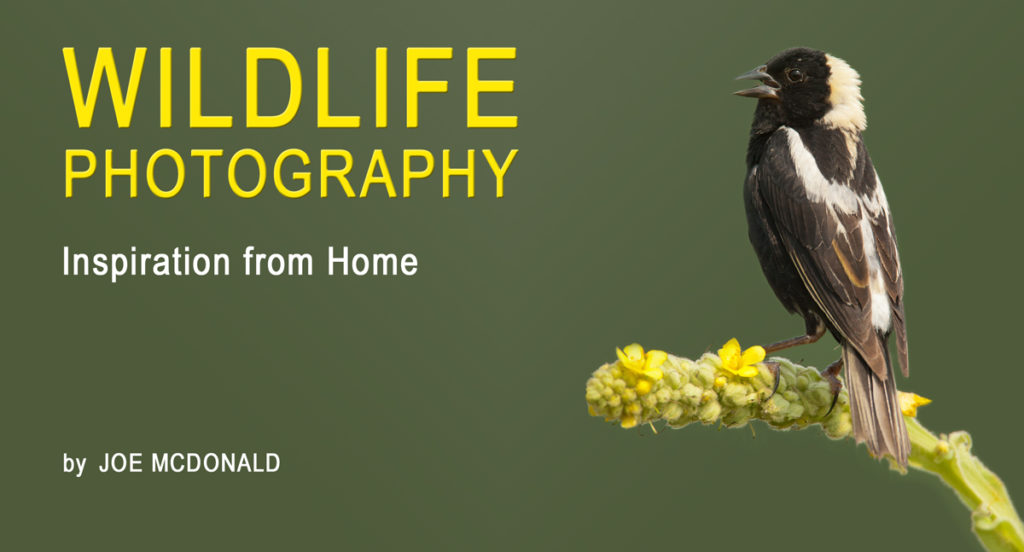
My wife and I are lucky enough to travel the world leading wildlife photo tours and safaris, a job and life-style that has us on the road at least 30 weeks each year. Serious wildlife and nature photographers tied to jobs at home where vacation time and travel budgets are limited may be envious of that type of schedule. Some may feel frustrated by having less glamorous wildlife subjects accessible to satisfy their passion. I’d like to suggest that anyone feeling this way shouldn’t, as some of the most productive photography you may ever do can be had within miles of your home.
Doubt that? Check various photo websites and look critically at the posted images. You’ll be astounded, and humbled, too, by the quality of the work and the sheer vision displayed with photos of American wildlife, more often than not shot by photographers working locally. There’s a valuable lesson here, and that is you don’t have to travel to exotic locations to make great photos.
“I love to work locally, as this gives me time to explore, to try new techniques, to redo and redo and redo, if necessary, a particular photo project until I get it right.”
Joe McDonald
I’m often asked where I most enjoy photographing and my answer always surprises. It is: Home. I love to work locally, as this gives me time to explore, to try new techniques, to redo and redo and redo, if necessary, a particular photo project until I get it right. Now, you might be asking yourself why any pro would need to redo and redo a shoot, but as I mentioned in a previous article in The Photographer I do a lot of camera trap work where I never know what I’ll get. Often, I have little control over my subject’s direction or pose. It is a lucky day when everything comes together on the first attempt.
But photographing around home truly does inspire me. I look forward to the first warm days in Spring when the vernal ponds on my property fill with Wood Frogs, drawn here to mate and lay their eggs, an event that may last only a few days. The arrival of Spring in central Pennsylvania is unpredictable, sometimes arriving in early March, sometimes not until mid-April, and more often than not I’m not inside the state when the frogs put on their show. But I hope to be, and I’m always planning some new way to capture an event I’ve witnessed off-and-on for over twenty-five years.
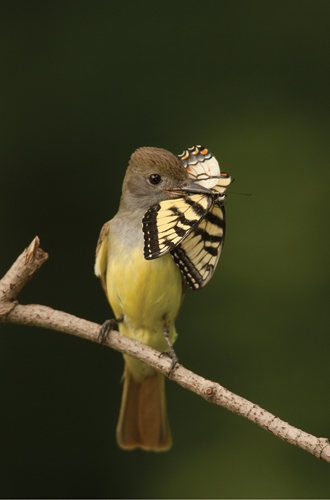 I am fortunate to live in a rural area, with plenty of farm fields, woodlots, and a track of forest that starts at my studio and continues further than I’ll ever see. Each habitat offers its own special treasures. One day in late Spring I noticed a Bobolink, a colorful but uncommon bird mid-state, flutter to a weed stalk in a neighbor’s pasture. Days later, after obtaining permission from the farm owner, I was sitting inside a blind, framing that Bobolink inside my lens. To me, photographing that bird was more exciting than most any bird I’ve shot on foreign trips, as I’d only had far-off views of Bobolinks before, and those were many years ago. I can still see in my mind’s eye the first Bobolink I ever saw, and ever since I lusted – yeah, that’s the word – for a chance to photograph one.
I am fortunate to live in a rural area, with plenty of farm fields, woodlots, and a track of forest that starts at my studio and continues further than I’ll ever see. Each habitat offers its own special treasures. One day in late Spring I noticed a Bobolink, a colorful but uncommon bird mid-state, flutter to a weed stalk in a neighbor’s pasture. Days later, after obtaining permission from the farm owner, I was sitting inside a blind, framing that Bobolink inside my lens. To me, photographing that bird was more exciting than most any bird I’ve shot on foreign trips, as I’d only had far-off views of Bobolinks before, and those were many years ago. I can still see in my mind’s eye the first Bobolink I ever saw, and ever since I lusted – yeah, that’s the word – for a chance to photograph one.
Just a few days ago I learned that a Bald Eagle perched regularly on a dead snag within sight (via a spotting scope) of my front porch. Again, after getting an okay from the land owner, I set up a blind, and when the weather finally cooperates, I planned on being inside, hoping the eagle pays a visit. This opportunity prompted me to call one of my photo buddies and declare a somewhat cryptic message on his answering machine, ‘I love where I live!’ As it turned out, the Bald Eagle wandered elsewhere and, with a six-week trip to Africa looming, I had to take down the blind. I’ll try again when I have another stretch of time at home.
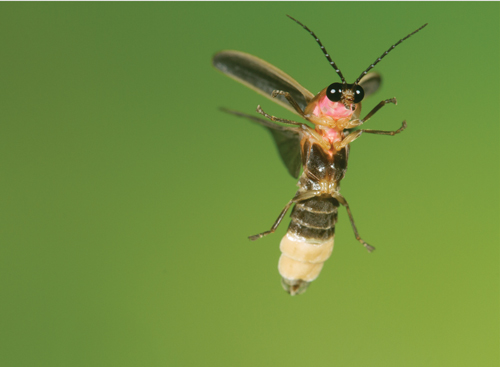 If my past experiences are any indication, I think we sometimes take for granted the photo opportunities we have around us close to home. I know I have, and I have lived to regret it. One of my biggest regrets, ever, was not taking more time to photograph a Belted Kingfisher nesting on a stream bank within 100 yards of my home. True, I did spend some time in my photo blind and I did get some nice images, but I could have explored this subject – one of the wariest birds in North America – in far greater detail. I made the mistake of thinking I’ll just do more shooting during the next nesting season, which never happened as the birds did not return!
If my past experiences are any indication, I think we sometimes take for granted the photo opportunities we have around us close to home. I know I have, and I have lived to regret it. One of my biggest regrets, ever, was not taking more time to photograph a Belted Kingfisher nesting on a stream bank within 100 yards of my home. True, I did spend some time in my photo blind and I did get some nice images, but I could have explored this subject – one of the wariest birds in North America – in far greater detail. I made the mistake of thinking I’ll just do more shooting during the next nesting season, which never happened as the birds did not return!
See Joe in person at the “I Heart Photography Conference and Expo”, October 12-14 at the Grapevine Convention Center in Grapevine, TX
Register Now.
In my previous article I explored the potential camera traps had for making unique images, and this type of work is perfect for local photography. You might be amazed what you can capture in your own backyard garden. Friends of mine who live in Texas complain about the Armadillos that frequently tear up their yard but someone living outside this unique mammal’s range, I’d love to have the chance to photograph one. Many years ago, a National Geographic captured an outstanding image of an Armadillo in mid-jump – when frightened, these armored, prehistoric-looking critters often bound straight up into the air – and I can still picture that armadillo in my mind.
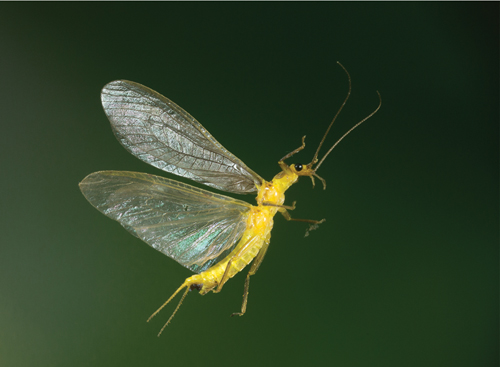 In my neck of the woods Chipmunks can be a problem, chewing into the wires or linings of a parked car, or into and through a screen door, and many homeowners sharing their woodland habitat with this attractive rodent consider them a pest. I don’t, and one of my summer projects a year or so ago was to capture an Eastern Chipmunk in mid-leap. I succeeded, but I must admit that the project took several days. The story on how I succeeded might be instructive and motivational.
In my neck of the woods Chipmunks can be a problem, chewing into the wires or linings of a parked car, or into and through a screen door, and many homeowners sharing their woodland habitat with this attractive rodent consider them a pest. I don’t, and one of my summer projects a year or so ago was to capture an Eastern Chipmunk in mid-leap. I succeeded, but I must admit that the project took several days. The story on how I succeeded might be instructive and motivational.
Just outside my studio in the woods I have an 8×12 elevated water set, that stands about chest high. Elevated as it is, I can shoot from a water-level position without lying down and instead I can stand or sit and still have a duck’s eye view. Preparing for this shot I baited opposing sides of the water set with sunflower seeds, and sprinkled a couple of seeds on a series of stones I placed between the two bait sites. Chipmunks and Gray Squirrels quickly learned that the fastest way to either seed cache was across the stones. Over the span of a few days I lengthened the distance between two of these rocks, forcing these rodents to jump as they traveled from one feeder to another. All that was the easy part.
Chipmunks and squirrels would visit the water set at varying times of the day and I didn’t have the time to sit and wait for my subjects to appear. Quite frankly, I also knew I would not have the reaction time necessary to catch a chipmunk in mid-leap if I was waiting behind the camera. By using a camera trap, however, I knew I could get the shot … or so I thought. It turned out it wasn’t quite that simple.
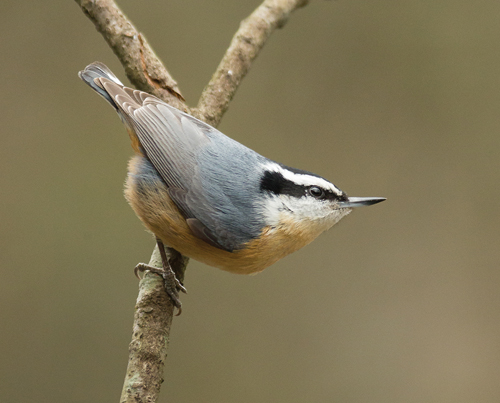 As I discussed previously, lag time is an issue when using a camera trap, and my chipmunks were completing their jumps before the camera fired. I tried repositioning the infrared beam of my RangeIR closer to their launching point, but that didn’t work, either. Either the chipmunks would lean forward just far enough to break the beam before they jumped, or they’d start their jump early, and still be on the next rock before the camera fired. Nothing seemed to work, whether I changed the distance between one stone and the next or repositioned the infrared beam, the chipmunks defeated my every effort.
As I discussed previously, lag time is an issue when using a camera trap, and my chipmunks were completing their jumps before the camera fired. I tried repositioning the infrared beam of my RangeIR closer to their launching point, but that didn’t work, either. Either the chipmunks would lean forward just far enough to break the beam before they jumped, or they’d start their jump early, and still be on the next rock before the camera fired. Nothing seemed to work, whether I changed the distance between one stone and the next or repositioned the infrared beam, the chipmunks defeated my every effort.
I finally succeeded when I switched to an external high-speed shutter, made by Cognisys, the same company that manufactures the RangeIR and the Sabre infrared triggers. This shutter system has a nearly instantaneous response time – about 1/200th of a second, fast enough that I could now position the infrared beam mid-way between the two stones and be certain I’d catch the Chipmunk as it was crossing. And it worked.
Now you might be thinking that’s a lot of time and effort for a darn rodent, and I would agree with you, but I must say it was a fun project, and it did result in some novel shots of an animal we often overlook or take for granted. Just as we often do with bugs, another common and diverse subject providing imaginative photographers the opportunity to make some pretty interesting and unique images.
I’ve certainly done my time stalking insects and spiders around our garden and the surrounding fields with a macro lens, and I’d really like to do more of this type of photography and exploration if I could just take the time. I rarely have that time. However, once again by using a camera trap I can take some very unique insect photographs while I’m doing something else. It’s actually fairly easy.
As you all probably know, insects are attracted to lights at night, and insects don’t just fly into a light, they swirl and mill about, etching figure eights and loops that can be mesmerizing. All of this circling centered around a light makes catching a flying insect with a beam a real possibility. The setup is pretty easy, although you’re likely to be firing off a lot of images to land a good one.
In the last article I discussed lag-time, the delay between when a beam is tripped and when a camera actually fires. Fortunately, lag-time isn’t an issue here since I’m shooting flying insects at night. I connect a flash to the RangeIR instead of connecting to a camera. With flash, there is no lag time, and when an insect breaks the beam the flash fires virtually instantaneously. Actually, several flashes fire, as I’m using wireless transmitters to fire several flashes for more attractive lighting. The flashes are set to a Power Ratio of 1/64, for an extremely fast flash duration, necessary for fast-flying insects shot at macro magnifications.
As I sat in my office writing this article my attention was constantly diverted to a constant stream of songbirds visiting the feeders just outside my window. Last winter I took the time to finally photograph some of the birds we’ve enjoyed for years. Although we feed the birds daily we’re not out on our porch when most of the birds visit, and I suspected birds would be a bit shy if I was simply standing around, and I didn’t have the time to waste finding out.
Instead I set up a photo blind on my front porch, which not only minimized the chance of disrupting the birds’ visits, but also would help to keep me warm on a cold winter day. I added a couple of branches and weed seed heads around the feeder for attractive perches and gave the setup a couple of days for the birds to get used to the change.
Don’t miss Joe’s program at the I Heart Photography Conference and Expo, October 12-14 at the Grapevine Convention Center in Grapevine, Texas.
Register Now.
Birds that are accustomed to visiting a feeder may not utilize even the most beautiful perch immediately. They have a routine, and if you’re working around your home it’s wise to give the birds time to change their habits. A lot of people don’t, and they get discouraged quickly when their grand plans to take bird pictures don’t materialize immediately. A couple of days later I spent several very productive hours inside the blind, capturing images of subjects I’ve ignored for years.
This summer, for the first time in years, I’ll be home for several months. While I know I’ll have the usual office distractions, I’ve vowed that I would take the time to enjoy, photographically, all the opportunities I have just outside my office door. I’d encourage you to do the same!
 Joe McDonald has been photographing wildlife and nature since he was a high school freshman and was selling his photos to the National Wildlife Federation. He has been published in every natural history publication in the U.S., including Audubon, Bird Watcher’s Digest, Birder’s World, Defenders, Living Bird, Natural History, National and International Wildlife, Ranger Rick, Smithsonian, Wildlife Conservation, and more. He is the author of nine books and one e-book. Joe is especially well known for his expertise in electronic flash and using equipment for high speed flash and for remote, unmanned photography. For more information, go to: www.hoothollow.com
Joe McDonald has been photographing wildlife and nature since he was a high school freshman and was selling his photos to the National Wildlife Federation. He has been published in every natural history publication in the U.S., including Audubon, Bird Watcher’s Digest, Birder’s World, Defenders, Living Bird, Natural History, National and International Wildlife, Ranger Rick, Smithsonian, Wildlife Conservation, and more. He is the author of nine books and one e-book. Joe is especially well known for his expertise in electronic flash and using equipment for high speed flash and for remote, unmanned photography. For more information, go to: www.hoothollow.com










